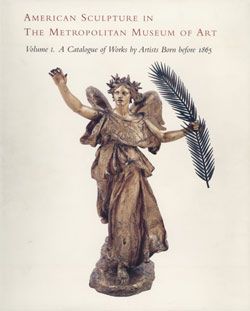Jules Bastien-Lepage
Augustus Saint-Gaudens American
Not on view
Saint-Gaudens first met the artist Jules Bastien-Lepage (1848–1884) in 1868 while studying at the École des Beaux-Arts in Paris. He renewed his acquaintance with the French painter upon his return to Paris in 1877, and, as Saint-Gaudens later recalled, Bastien-Lepage "asked if I would make a medallion of him in exchange for a portrait of myself. Of course I agreed to the proposal." The last and most ambitious of the medallions depicting artist-friends completed during the sculptor's French tenure (1877–80), this portrait announces a complete technical and compositional mastery of the bas-relief. The painter's compact form fills the right and center of the composition, while his palette and brushes command its lower third. His hair and beard are neatly kept, and he wears a jacket, shirt with upraised collar, and loosely knotted tie. Bastien-Lepage's pride in his profession is sensitively expressed through his erect posture, vibrant and assured gaze, and comfortable grasp of the tools of his trade. The portrait evidently pleased Saint-Gaudens. According to his son Homer, "none of the medallions my father then modeled satisfied him to the extent of that of Bastien-Lepage, both because he believed the relief was as near perfection as he ever came, and because he was greatly interested in a rare combination of talent and vanity in his sitter." In this instance, Saint-Gaudens visually expressed Bastien-Lepage's egotism by accommodating his request that his hands not be depicted too prominently. Indeed, in the best of Saint-Gaudens' portraits, one senses an infusion of the sitter's character and a recording of psychological impressions.
Due to rights restrictions, this image cannot be enlarged, viewed at full screen, or downloaded.



